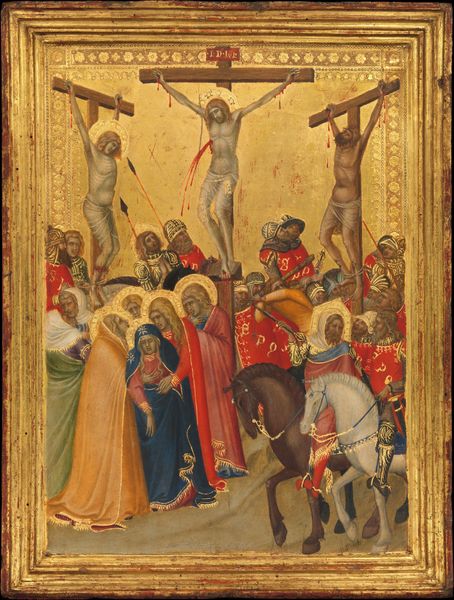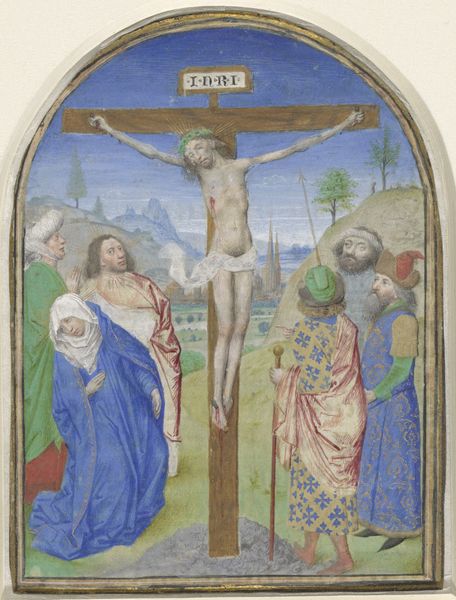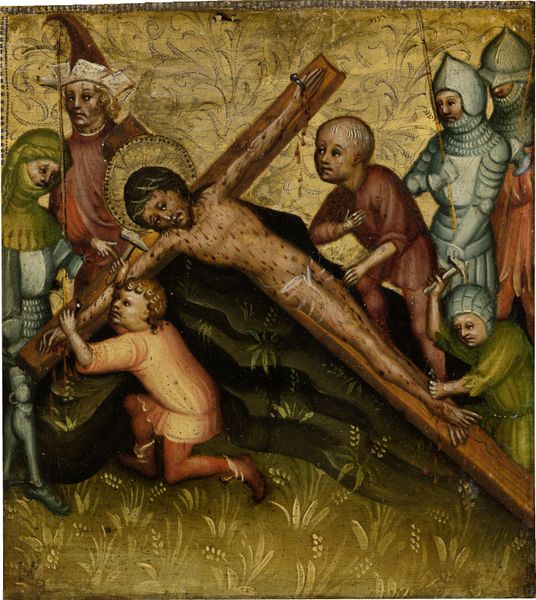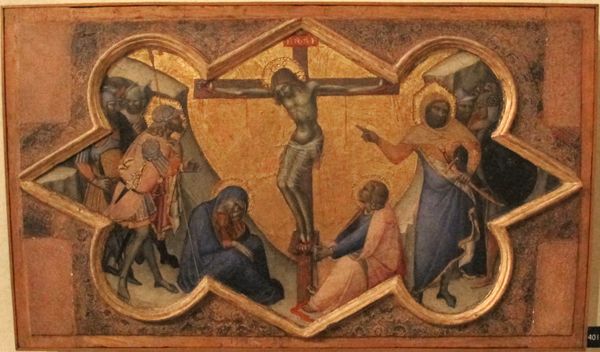
painting, oil-paint
#
painting
#
oil-paint
#
figuration
#
oil painting
#
cross
#
history-painting
#
italian-renaissance
#
christ
Dimensions: 6 1/4 x 4 1/2 in. (15.9 x 11.4 cm)
Copyright: Public Domain
Curator: This oil painting, "Descent from the Cross," was created by Girolamo da Cremona sometime between 1451 and 1483. You can currently find it here at the Metropolitan Museum of Art. What strikes you initially about its visual language? Editor: The stark stillness amidst such pronounced grief really gets to me. It’s like the air itself has become thick and heavy with the weight of the moment. There is an inescapable air of melancholy surrounding Christ’s body and his mourners. Curator: Precisely. Note the precise detailing and gilding, the masterful application of oil paint—all in service of conveying, yes, profound emotional depth. We can look at the cross itself: it’s textured, not a smooth surface but made up of multiple, nearly shimmering, gold points. The Renaissance artist deployed highly controlled methods of illusion to communicate loss, and indeed religious reverence. Editor: Right, but it also begs questions about power, doesn’t it? Who is allowed to grieve, whose grief is centered, and who is actively erased from the narrative? Consider how, even in his death, Christ's body is surrounded primarily by men and white-robed women; we do not have representations of other mourners present at such an event. This erasure serves to center the Western canon even at a point of universal suffering. Curator: An intriguing consideration of representation. But returning to form, observe how the artist’s Renaissance sensibilities inform the use of perspective and composition, subtly guiding the viewer's gaze. Look at the clear organization of the figures in relation to the central narrative point, drawing focus to the body. Editor: True, the body is the focus, rendered with a soft, almost vulnerable quality; yet this idealized body and scene are situated within very specific socio-political frameworks. This descent narrative gains power because it taps into existing inequalities and omissions, framing loss within structures that privilege specific identities. Curator: A powerful synthesis of historical perspective with formal assessment. In contemplating the 'Descent,' it seems we've touched upon not just artistic achievement, but also on the narrative controls and historical omissions art can hold. Editor: It serves as a poignant reminder that artistic skill, no matter how refined, exists in tandem with the dynamics of human stories.
Comments
No comments
Be the first to comment and join the conversation on the ultimate creative platform.













